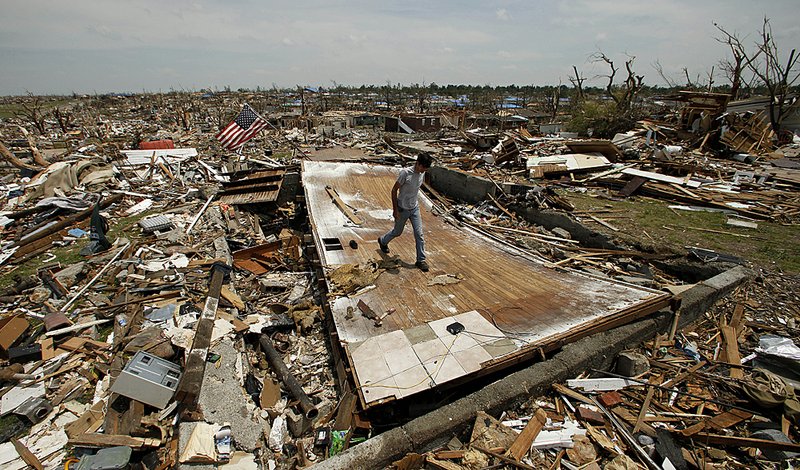JOPLIN, Mo. — The Federal Emergency Management Agency said Monday that some of the people left homeless by the Joplin tornado could be placed in rental homes nearly an hour’s drive away, adding that it will consider bringing in trailers, as it did for New Orleans after Hurricane Katrina, if enough homes are not available.
FEMA’s first option for housing the thousands of displaced is to find them existing rental housing within a 55-mile radius of Joplin, because there isn’t much housing left in the city of nearly 50,000 residents that was badly damaged by the May 22 tornado, spokesman Susie Stonner said. Nearly a third of the city was damaged by the violent storm that killed more than 130 people.
Missouri Department of Public Safety Deputy Director Andrea Spillars also said Monday that the number of remains is still 146, but that some could be duplicates. As a result, Spillars said she cannot confirm exactly how many people died in the twister. Twenty-nine people remained unaccounted for Monday.
Stonner said that despite the distance, putting people in permanent housing is preferable to trailers - especially in an area prone to tornadoes and severe weather.
“Wouldn’t you prefer to be in a stable building over a mobile home?” she asked. Stonner also noted that getting things like water, sewer lines and developing pads for trailers would take substantial time.
City Administrator Mark Rohr said the goal is to keep people as close to home as possible but that “based on the circumstances we’ll have to respond accordingly.” The city has not said how manypeople were left homeless by the twister, but Rohr said 4,500 to 5,000 residents have registered with FEMA.
Temporary housing will be made available for up to 18 months. Some people along the Gulf Coast still live in FEMA trailers nearly six years after Hurricane Katrina.
Penny Musgraves is happy - and almost surprised - to be alive. But for Musgraves, whose low-income town house was ripped away above her head as she protected her cowering 6-year-old daughter, the joy of surviving is beginning to give way to confusion and anxiety about the future.
“I’m kind of scared,” said the 45-year-old mother, who is unemployed and currently living with her daughter at the Red Cross shelter set up at Missouri Southern State University. “There isn’t much lowincome housing. I can’t rent a place. I don’t know what I’m going to do.”
While many of the survivors had insurance, it could be months, if not years, before they can rebuild. Removing the millions of tons of debris and remaking the city’s destroyed infrastructure will likely take well into the summer if not longer, though Rohr said the first phase of debris removal begins later this week.
Rebuilding homes can’t start until that work is finished.
Recent history suggests many people won’t be able to wait.
New Orleans lost 29 percentof its population after Hurricane Katrina as residents left and settled elsewhere. Greensburg, Kan., which was leveled by a tornado in 2007, lost about half its population even though the town was rebuilt. It dropped from 1,574 before the tornado to 777 in 2010.
Front Section, Pages 3 on 05/31/2011
